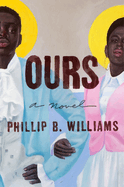
| Publisher: | Viking | |
| Genre: | Magical Realism, Literary, African American & Black, Fiction, Historical | |
| ISBN: | 9780593654828 | |
| Pub Date: | February 2024 | |
| Price: | $32 |
| Starred | Fiction |
by Phillip B. Williams
Esteemed poet Phillip B. Williams (Thief in the Interior; Mutiny) offers a vast and rapturous feat of fabulism in his first novel, Ours. This is a 19th-century historical epic created with both a vivacious enthusiasm for folkloric traditions and a deep contemplation of what it means to be freed from the violent machine of slavery in the U.S.
Ours is a town where freed men and women could build lives insulated, by enchantment, from white supremacy. The place springs from the audacity of a mysterious woman called Saint, who aims to "kill" slavery outright. After claiming a plot of land in Missouri, she raids Southern plantations, ushering the owners unto death while giving safe passage to Ours for "the newly freed." Through bewitched stone carvings, she makes this town inaccessible to the outside world.
"Freedom didn't mean safety," however. "And if there's anything more shockingly unpredictable than freedom, it's love." This idea is the truly marvelous fulcrum around which Ours pivots. As the novel sprawls across time, with the narrative occasionally bending back onto itself through a dreamy sort of chronology, the newly liberated face the dilemma of fashioning freedom from scratch, as best they can, on their own or with each other.
Williams has a voice that soars across each page, breathing life into his dazzling array of characters--the lovers and the malcontents, the queer and the mystical, the brazen and the cautious. At an incredible 600 pages long, Ours is nevertheless a novel worth savoring. --Dave Wheeler, senior editor, Shelf Awareness
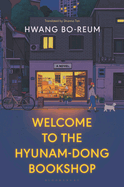
| Publisher: | Bloomsbury | |
| Genre: | World Literature, City Life, Fiction, Korea | |
| ISBN: | 9781639732425 | |
| Pub Date: | February 2024 | |
| Price: | $28.99 |
| Fiction |
by Hwang Bo-reum, trans. by Shanna Tan
Set in the leafy suburbs of Seoul, South Korea, Welcome to the Hyunam-dong Bookshop is the entrancing story of a young woman's curious decision to walk away from the trappings of her outwardly successful life and pursue her dream of opening a bookstore. Hwang Bo-reum's graceful, meditative debut novel, translated by Shanna Tan, introduces readers to an engaging cast of lost souls seeking answers to the central questions of their lives: What does it mean to live a contented life in a competitive culture? And can we achieve contentment if our decisions make others unhappy?
When Yeongju's feelings of suffocation and bewilderment at the meaningless of her life become too much to bear, she abandons her job and her husband to focus on the one thing that always bought her joy as a child: books. Clueless about running a business, she takes a desperate leap of faith and opens a bookshop and café in a quiet residential neighborhood without much foot traffic. Like a fragile sapling placed in unfamiliar soil, Yeongju's business takes root in the neighborhood and grows despite itself, nurtured by a community of regulars for whom the bookstore becomes their escape from the pressures of everyday life.
Welcome to the Hyunam-dong Bookshop is a gentle exploration of how the hamster wheel of corporate ambition can grind down a person. Hwang's is a soothing narrative voice, her novel a meditation on bookstores and the communities they foster, as well as an aspirational story of finding purpose when you think you might be ready to give up. --Shahina Piyarali, reviewer
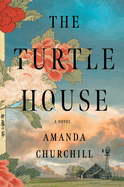
| Publisher: | Harper | |
| Genre: | Women, Coming of Age, Fiction, Asian American & Pacific Islander | |
| ISBN: | 9780063290518 | |
| Pub Date: | February 2024 | |
| Price: | $30 |
| Fiction |
by Amanda Churchill
The Turtle House, Amanda Churchill's moving debut novel, weaves the life stories of Mineko "Minnie" Cope, a woman in her 70s who was once a Japanese war bride, and her Texan granddaughter, Lia. A promising architect, Lia has fled her dream job and returned to tiny Curtain, Tex., to share a room with Mineko, recently displaced after a house fire. Lia, suddenly curious about her Grandminnie's past experiences, begins recording Mineko's accounts of her early years in Japan. As Mineko opens up about her past, Lia gains a greater understanding of her prickly grandmother, and the two eventually join forces on a secret project that may bring healing to both of them.
With spare but powerful descriptions, Churchill draws readers into Mineko's early life: her love of swimming, her sharp intelligence, and her first love, Akio Sato. The two spend hours at the titular turtle house and plan their future together. But after World War II, Mineko finds herself married to James Cope, a U.S. soldier; they immigrate to Texas with their two children. Mineko adapts to her new world, but she never forgets Akio or the life she left behind. Meanwhile, 20-something Lia struggles with anxiety and insecurities in architecture school, as well as the unsettling attention of a charismatic professor. As she listens to Mineko's story, Lia knows she must stop hiding, confront her painful experiences, and decide how to move forward.
Sensitive and vividly described, The Turtle House is a powerful meditation on family, love, and the complicated meaning of home. --Katie Noah Gibson, blogger at Cakes, Tea and Dreams
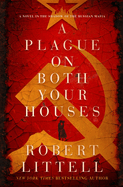
| Publisher: | Blackstone | |
| Genre: | Crime, 20th Century - General, Thrillers, Fiction, Historical | |
| ISBN: | 9798212638357 | |
| Pub Date: | February 2024 | |
| Price: | $16.99 |
| Mystery & Thriller |
by Robert Littell
In the aftermath of the Soviet Union's demise, two star-crossed lovers seek escape from the nation's pre-democracy turf wars in Robert Littell's short, quirky novel A Plague on Both Your Houses. Littell (The Company) tells the story, filled with Shakespearian overtones, of Roman and Yulia: one, the only son of Timur the Lame, Ossetian godfather of the vory v zakone ("thieves-in-law") mafia; the other, the only daughter of Naum Caplan, head of the Jewish vory. It is the time known to Russians as the Great Turf War, where "scavenger capitalists" rush to provide krysha or "roof" (i.e., protection) to new businesses springing up across the country.
Littell's descriptions of Moscow's hurly-burly world of criminality, corruption, and cynical police investigations are devilishly good. Although Roman and Yulia's love story lacks depth, the tale of Russian gangsters trading blows for control of the city is delightful fun. Littell playfully jumps between the backstory and "frontstory" of his characters and effortlessly shifts from first- to third-person perspective, capturing a range of eccentric voices in the dawning days of a new Russia. As Roman and Yulia weigh the risks of escaping their destinies within their honor-bound mafia families, the unsurprising ending is cloaked cleverly enough to provide a satisfying coda. A Plague on Both Your Houses is an engaging and high-octane tale of love and war that keeps its tongue firmly in cheek, but its dynamic characters deserve a longer stage run than Littell provides. --Peggy Kurkowski, book reviewer and copywriter in Denver
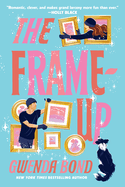
| Publisher: | Del Rey | |
| Genre: | Mystery & Detective, Fantasy, Contemporary, International Crime & Mystery, Fiction | |
| ISBN: | 9780593597736 | |
| Pub Date: | February 2024 | |
| Price: | $18 |
| Science Fiction & Fantasy |
by Gwenda Bond
Gwenda Bond's entertaining heist novel, The Frame-Up, combines grand larceny with a complicated mother-daughter bond, a talented crew with a fractured history, and--oh, yes--a bit of magic.
Art thief and expert forger Dani Poissant has been out of the game for a decade, after turning her mother, Maria, over to the FBI. But when Dani gets drawn back in for a job involving a sinister painting of her mother's old lover, she calls in the big guns, aka her old crew. Despite long-held resentments (and a still-simmering attraction between Dani and her first love, Elliott), they've got 10 days to pull off a heist while staying clear of the feds. Dani, posing as a security consultant, plans the heist, navigating obstacles physical and magical. But four days before go time, she discovers a journal written by one of her ancestors, with a secret that raises the stakes sky-high.
Bond (The Date from Hell; Louis Lane: Fallout) identifies her characters' gifts (manipulating software, casting illusions) but leaves the workings of their magic mostly opaque. The crackling frustration between Dani and her old crew is evident, though the challenges vary in size and believability. Still, the narrative zips along, leaving readers following Dani (and her dog, Sunflower) as the clock ticks down and the tensions--among the crew and in Dani's heart--rise ever higher.
Wry and witty with a few well-placed plot twists, The Frame-Up is good fun for fans of art, magic, and a satisfying revenge story. --Katie Noah Gibson, blogger at Cakes, Tea and Dreams
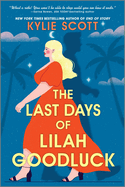
| Publisher: | Graydon House | |
| Genre: | Romantic Comedy, Royalty, Family Life, Magical Realism, Romance, General, Fiction | |
| ISBN: | 9781525804809 | |
| Pub Date: | February 2024 | |
| Price: | $18.99 |
| Romance |
by Kylie Scott
Kylie Scott's The Last Days of Lilah Goodluck is a startling and spicy rom-com that crackles with a touch of magic. Lilah Goodluck has no reason to suspect her life is anything but a happy one, until she pulls a psychic from the path of a speeding car. "It would seem you're owed something," Good Witch Willow says with gratitude, rewarding Lilah with five life-changing predictions--one of them life-ending: Lilah has eight days before her heart stops. She quickly laughs off the unasked-for predictions, especially her just-over-a-week death knell, but cannot ignore them either, given that, one by one, everything the psychic tells her comes true.
The winning lottery ticket numbers are great, but the cheating boyfriend and failure to secure a job promotion are not. And what are the odds her soul mate is, indeed, that gorgeous bastard son of a king? The harsh reality of Lilah's situation comes into abrupt, hard focus as the days tick down to her last. Readers watch the heroine take a deep dive into the aching clarity of finally finding true love while having only days to live.
Scott (End of Story) successfully enchants her story beyond the usual romantic comedy by fusing witty banter with a paranormal plot, which adds a certain believable freshness to the genre. It doesn't take a psychic to predict readers will devour this novel in a single sitting. --Paul Dinh-McCrillis, freelance reviewer
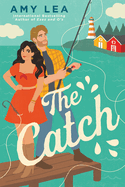
| Publisher: | Berkley | |
| Genre: | Romantic Comedy, Romance, Contemporary, Multicultural & Interracial, Fiction | |
| ISBN: | 9780593336618 | |
| Pub Date: | February 2024 | |
| Price: | $18 |
| Romance |
by Amy Lea
Amy Lea (Exes and O's) takes readers on a trip to a fishing village in coastal Nova Scotia in The Catch, the third rom-com in her sweet and subversive The Influencers series. When fashion influencer Melanie Karlsen arrives at a resort she's meant to promote and learns there's been a scheduling mix-up, she hastily requests a reservation at the only Airbnb available in the area. Lobster fisherman and innkeeper Evan Whaler is unimpressed when an overdressed city girl shows up at his downtrodden inn expecting accommodations for a week. The inn is not only closed for renovations, but it's also at the center of a longstanding conflict between his mother and aunt.
The ensuing opposites-attract romance is a fish-out-of-water turned fake-engagement story with humor and depth. The two make all kinds of assumptions about each other, which play out to great comic effect as they are forced together repeatedly. Lea also tests readers' assumptions with a heroine who claims unapologetic ownership of her body and image, including past cosmetic surgery. The Catch is also full of surprisingly poignant moments, as Evan and Mel both work to repair complicated family relationships and determine their professional goals.
The brilliance of The Catch lies in the author's ability to enthrall readers with clever twists on expected story beats and complex, lovable characters. This funny, medium-spicy romance is a great fit for fans of Tessa Bailey's It Happened One Summer and Emily Henry's Book Lovers. --Suzanne Krohn, librarian and freelance reviewer
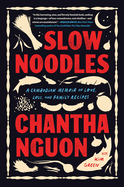
| Publisher: | Algonquin | |
| Genre: | Biography & Autobiography, Regional & Cultural, Southeast Asia, Cooking, Asia, Culinary, Asian & Asian American, History, Asian | |
| ISBN: | 9781643753492 | |
| Pub Date: | February 2024 | |
| Price: | $29 |
| Starred | Biography & Memoir |
by Chantha Nguon, Kim Green
Slow Noodles tells a story that is heart-wrenching, inspiring, harrowing, and mouthwatering. Chantha Nguon's memoir, written with Kim Green, encompasses both world history and an intimate personal account.
Nguon, born the youngest child in a comfortable family in Cambodia's Battambang, had nine years of soft living and good eating before Pol Pot reset time to Year Zero in the 1970s. Moving first to Saigon, where she weathered the end of the Vietnam War, and then escaping as a refugee into Thailand, Nguon gradually lost everyone she loved, ending with her mother's death when Nguon was 23. She was a food-focused young child with a mother who took cooking very seriously; she became a refugee in peril of starvation. For Nguon, rationing or missing entirely the most basic of ingredients is not only a literal life-or-death issue but also symbolically life-altering. With the loss of her family and, to some extent, her culture, she views herself as a repository of recipes, culinary knowledge, memories, pain, and strength.
Food metaphors and recipes enrich this book, which sparkles with poignant, lovely writing: "The green-fresh fragrance of young rice is as lovely and fleeting as childhood itself." Nguon's mother "taught [her] the art of rebelling as quietly as a whisper of silk." By the end of the story, Nguon has transformed into an impressive woman, acting as her husband's equal (a radical concept, encouraged by her quietly rebellious mother) and a fierce advocate for social change.
Slow Noodles is a rare gem of a story, gorgeously written, humble and stirring, and packed with tempting recipes. --Julia Kastner, librarian and blogger at pagesofjulia

| Publisher: | Little, Brown | |
| Genre: | Biography & Autobiography, Women, Art, Literary Criticism, Criticism & Theory, Subjects & Themes, Memoirs | |
| ISBN: | 9780316374880 | |
| Pub Date: | February 2024 | |
| Price: | $29 |
| Biography & Memoir |
by Leslie Jamison
Leslie Jamison's captivating Splinters: Another Kind of Love Story is a straightforward memoir from an ambitious writer celebrated for her wide-ranging essays. In Splinters, Jamison (Make It Scream, Make It Burn; The Empathy Exams; The Recovering) navigates the aftermath of an ended marriage while her new life as a single mother unfolds. At the time of separation, their child was only one year old. It's not easy, this life she chooses: there's a pandemic; a hostile co-parent; a doomed long-distance love affair; classes to teach and students to mentor; and, above all, a transformation into the mother of a young child.
The constant in Jamison's life seems to be dramatic change, something a friend points out to her when pressed about their cooling friendship. The author interrogates herself: "Why did I keep pursuing these thresholds, even as I told myself I wanted something else? Maybe every rupture offered the chance to emerge as someone else, slightly altered, on the other side of each crisis." It's a pattern repeated throughout the text, the questioning of her choices and the possible reasons behind her decisions. It works because, among other admirable attributes, Jamison is a hyperaware writer with a sly sense of humor. About her husband, she writes: "I came to hold both truths at once: I'd caused him deep and lasting harm, by leaving him. And also, I did not regret choosing a life that would not share a home with his anger. When I say I held both truths, I mean that I lay with them, sleepless, in the dark." --Nina Semczuk, writer, editor, and illustrator
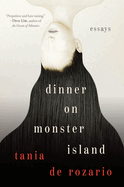
| Publisher: | Harper Perennial | |
| Genre: | Biography & Autobiography, Asian & Asian American, Popular Culture, Literary Collections, Social Science, Essays | |
| ISBN: | 9780063299665 | |
| Pub Date: | February 2024 | |
| Price: | $17.99 |
| Biography & Memoir |
by Tania De Rozario
Sometimes, in order to make sense of a world that is monstrous, bloody, and horrific, people turn to the equally monstrous, bloody, and horrific. In Dinner on Monster Island, Tania De Rozario presents a collection of essays that are both a precise exploration of insightful art theory and an unpacking of intense personal history. De Rozario (And the Walls Come Crumbling Down) discusses her years growing up in Singapore as a queer, brown, fat girl and how she felt alienated by her family, her community, and the country at large. Using horror films, she launches into an emotional reckoning of feeling monstrous and how she saw herself mirrored in some of the scariest films in film history, including Carrie, The Witch, and The Exorcist.
When she was 12 years old, De Rozario was exorcised for being gay. It was emotionally violent, fervent and impassioned, and the first time she felt like she could take power away from those that wanted to control her. "Do you understand that you are a sinner? You speak one word: Yes. What you keep to yourself is the fact that you don't care. You are a sinner. And you don't care." It would take her years to put words to that feeling, when she saw Robert Eggers's film The Witch, in which the main character steps into her monstrous power and decides to live "deliciously" by carrying her truth on a journey only she can go on. This connection, and Tania's luscious and audacious writing, dares readers to go on their own journey. --Dominic Charles Howarth, book manager, Book + Bottle
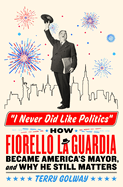
| Publisher: | St. Martin's Press | |
| Genre: | Biography & Autobiography, Political Process, United States, Political Parties, 20th Century, Political, History, Political Science | |
| ISBN: | 9781250285782 | |
| Pub Date: | February 2024 | |
| Price: | $30 |
| History |
by Terry Golway
In I Never Did Like Politics: How Fiorello La Guardia Became America's Mayor, and Why He Still Matters,Terry Golway (Frank and Al) does a brilliant job of constructing the life of Fiorello La Guardia, an everyman son of Italian immigrants who served New York City as its mayor from 1934 to 1946. La Guardia also represented the great city in the House of Representatives from 1923 to 1933--at the birth of the Great Depression, the rise of fascism, and amid overwhelming political rhetoric on both sides of the aisle.
Fiorello was a true public servant. He spoke several languages and was incredibly sympathetic to the immigrant experience, doing whatever he could for his constituents to make their lives safer and fuller. Living in East Harlem, he knew what it was like to be around the dusty and dangerous tenement buildings, the filth that a city unchecked could reach. He made it his duty to use New Deal money to better the lives of those he served, and used his platform to call out right and wrong as he saw it: "So harsh were his condemnations of Adolf Hitler before World War II that the State Department apologized to the Nazi government." In a world where so many are afraid to pick a side for what is right, it is an immense treat to read about a political maverick who, during an unprecedented time, wasn't right all the time--but strived all the same. --Dominic Charles Howarth, book manager, Book + Bottle
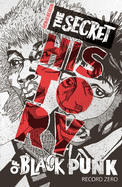
| Publisher: | Silver Sprocket | |
| Genre: | History & Criticism, Music, Nonfiction, General, History, African American & Black, Comics & Graphic Novels | |
| ISBN: | 9798886200355 | |
| Pub Date: | February 2024 | |
| Price: | $14.99 |
| History |
by Raeghan Buchanan
The Secret History of Black Punk, the first book in a planned series about overlooked or under-credited Black music heritage in the United States, is a joyful and passionate exploration of the under-recognized contributions of Black people in music history, particularly punk music and its legacy genres. The material is showcased through vibrantly colored graphic material--powerful, zine-like illustrations. Raeghan Buchanan (Strange Glances), a musician and artist, traces the roots of contemporary rock music and all the genres that followed it back to "Godmother" Sister Rosetta Tharpe to counter the fact that "many Black forebears have been dropped from the common story of music, making it difficult to gain a full understanding of the culture."
Buchanan describes the cultural conditions the musicians encountered, including the Hackney brothers in protopunk Detroit of the early 1970s and Big Joanie in 2013 ("like the Ronettes, filtered through 80s DIY and Riot Grrrl with a sprinkling of dashikis"). These musicians were often told to confine their music to genres where Black people were already established, like funk or rap.
The challenges that Black punks and post-punks of all kinds face today echo those of the past, even if today the trappings of the punk movement from the 1970s and 1980s--the fashion, hairstyles, and the like--are considerably more mainstream. The Secret History of Black Punk is a welcome effort, helping to de-center whiteness and give readers both a more balanced perspective and a listening list that is well worth investigating. --Elizabeth DeNoma, executive editor, DeNoma Literary Services, Seattle, Wash.
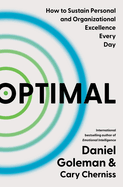
| Publisher: | Harper Business | |
| Genre: | Leadership, Personal Success, Psychology, Business & Economics, Emotions, Industrial & Organizational Psychology | |
| ISBN: | 9780063279766 | |
| Pub Date: | January 2024 | |
| Price: | $32.99 |
| Business & Economics |
by Daniel Goleman, Cary Cherniss
Daniel Goleman (Emotional Intelligence; A Force for Good) brings his decades of expertise on emotional intelligence and how to cultivate it to Optimal, a collaboration with coauthor and fellow psychologist Cary Cherniss (Promoting Emotional Intelligence in Organizations), showing how to harness empathy and self-awareness, among other things, in the service of ongoing optimal performance.
The authors define "optimal" in an attainable, realistic way: that a person finish their day satisfied rather than focusing on an unattainable perfectionism. "Being in a good mood underlies the signs of high performance, and enhances both attention and intention--for instance, being better able to see the big picture...." Key to achieving an optimal state of both performance and satisfaction are the attributes of self-mastery, empathy, social skills, and stress resilience, all of which contribute to the quality of life that people enjoy while doing their best work.
Across four sections, they investigate the components of "optimal performance," and why the present moment requires an understanding of how to implement them. They first explore what characterizes an optimal state and how emotional intelligence aids in getting there. For instance, daily meditation and active listening are tools that anyone can cultivate. The authors then extend those practices to improving not only one's performance but interpersonal relationships as well, eventually showing how effective behaviors and practices can spread across an entire workplace. Ultimately, the book casts its eye forward to how the competencies the authors relate will serve readers in the face of an ever-changing world of work. --Elizabeth DeNoma, executive editor, DeNoma Literary Services, Seattle, Wash.
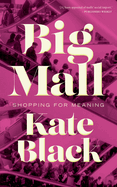
| Publisher: | Coach House | |
| Genre: | Urban, Sociology, Social History, Popular Culture, History, Social Science | |
| ISBN: | 9781552454725 | |
| Pub Date: | February 2024 | |
| Price: | $18.95 |
| Starred | Social Science |
by Kate Black
Big Mall, Canadian author Kate Black's meditation on the mall, is brief but powerful. Having grown up near West Edmonton, Alberta, Black didn't just go to the mall. She went to the mall. The West Edmonton Mall is the largest in North America and was the world's largest until 2004. It houses an amusement park; NHL regulation-size ice rink; and, for a time, live dolphins, along with hundreds of shops, eateries, and other attractions, all discussed in Black's brief book.
For better or worse, malls have been a defining part of culture: nearly every city worldwide has had a mall of some sort. Teens could go there to flirt and be away from their parents, and seniors could walk and socialize. Nearly everybody ended up there at some point. For a time, they were the new town square.
Though under 200 pages, Black's book is not a quick read. Each word and sentence evokes an emotion or launches a wave of nostalgia. It begs to be savored, inviting readers to pause and think about their own mall experiences, to imagine the sights, sounds, and smells of the malls of their adolescence.
The book is more of a wander than a linear history and, for that reason, each page is a surprise. The topics covered include the history of teenagers as a concept ("Teenagers, like malls, are an invention"); mall deaths and suicides; mall walking; animal captivity and the ethical obligation of zoos; YouTube videos about dead malls; and much more. Big Mall feels like a wide-ranging conversation with a friend in the food court. --Alyssa Parssinen, freelance reviewer and former bookseller
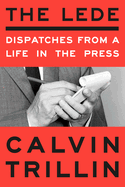
| Publisher: | Random House | |
| Genre: | Media Studies, Journalism, Literary Collections, Language Arts & Disciplines, Social Science, Essays | |
| ISBN: | 9780593596449 | |
| Pub Date: | February 2024 | |
| Price: | $31 |
| Essays & Criticism |
by Calvin Trillin
The victory lap phase of Calvin Trillin's long career has seen the release of several collections of his output, one of which is The Lede, a smorgasbord of witty journalism about journalism. When Trillin (Jackson, 1964) was growing up in Kansas City, his father "wanted me to be the president of the United States, and his fallback position was that I not become a ward of the county." Journalism, however, was "a conceivable middle course." The goal of this compendium of pieces from 1970 to 2021 for Time, the Nation, and the New Yorker is to present "a picture from multiple angles of what the press has been like over the years since I became a practitioner and an observer."
Anyone who has read Trillin's work knows what to expect: pithy comments, sly humor, and rigorous reporting. There are humorous pieces, such as a 2021 entry on his admiration for compelling ledes--first paragraphs meant to draw in readers--a favorite of which is "Dead," James Thurber's opening for a story about a man found with a knife in his back. Others focus on noteworthy journalists such as Edna Buchanan, the legendary police reporter for the Miami Herald, and R.W. Apple Jr. of the New York Times, who was so flamboyant that "Apple stories constitute a subgenre of the journalistic anecdote." Trillin covers a half-century of journalism with his usual droll observations. A self-described "jester among the jackals of the press" skewers and praises in equal measure in this entertaining work. --Michael Magras, freelance book reviewer

| Publisher: | Pegasus | |
| Genre: | Nature, Natural History, Science, Anthropology, General, Social Science, Paleontology, Fossils | |
| ISBN: | 9781639366163 | |
| Pub Date: | February 2024 | |
| Price: | $29.95 |
| Science |
by Ludovic Slimak
Paleoanthropologist Ludovic Slimak, author of hundreds of peer-reviewed scientific articles, argues in The Naked Neanderthal for an understanding of Neanderthals as neither primitive beasts nor fully human--but something distinctive and worth the effort to look past our prejudices to understand. The brilliance in Slimak's book, his first for a popular audience, is in how he lays out his view, moving seamlessly between narrative, summaries of past research, and argument.
Each chapter is organized around intriguing topics that allow Slimak to provide a wealth of context. For example, discussion of an archeological theory about Neanderthal cannibalism includes forays into sociological, anthropological, and psychological perspectives on cannibalism; environmental and social factors in eras of famine; and death rituals, leading to a conclusion that historians cannot reach full understanding without additional context. As with the book as a whole, this discussion begins with clear-cut questions and ends with even more--and more exciting--questions to ponder. By the last pages of the book, readers cannot help but see Slimak's point in ascribing our need to define Neanderthals as "us" or "not us" to the very same drives perpetuating racism.
This book is not merely a history of Neanderthals; it is also a history of the field of archeology. Slimak draws readers in with a journey mirroring the excitement, frustration, titillation, and doubt that characterizes study of the deep past, and he leaves them with food for thought about where we come from, who we are, and who we want to be. --Dainy Bernstein, postdoc in children's literature, University of Illinois Urbana-Champaign
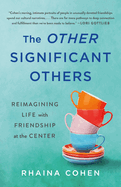
| Publisher: | St. Martin's Press | |
| Genre: | Family & Relationships, Friendship, Alternative Family, Marriage & Family, Sociology, Social Science | |
| ISBN: | 9781250280916 | |
| Pub Date: | February 2024 | |
| Price: | $29 |
| Parenting & Family |
by Rhaina Cohen
In her first book, The Other Significant Others, NPR editor and producer Rhaina Cohen presents an eye-opening exploration of the many ways friendship, in various forms, can enrich and empower lives for the better.
In 2022, Cohen attended six weddings in six months. Amidst these pandemic-deferred nuptial celebrations, where couples vowed to spend the rest of their lives together as a "we," Cohen began to question societal expectations of love and its meaning. Was sex the essential component of a truly committed relationship? Was a person's life somehow incomplete without a long-term romantic partner? Cohen, married, had always felt that a friend "could electrify my life." Thus, she began to examine the "we" of friendship: What draws people together on a purely platonic plane? What made some friendships endure, despite the parties not formally professing a long-term commitment to each other?
Cohen presents stories from her own life--along with other historical and contemporary case studies--that deconstruct diverse friendships of all stripes. These include people of varying ages, races, genders, marital states, sexual orientations, and religions. She delves into co-parenting friends; shared homeowners; friends who serve as executors of estates; and even those who act as primary caregivers, helping to shoulder the demands and burdens imposed by illness and debilitating medical treatments.
Cohen's well-researched, appealingly structured book stretches modern assumptions of love, making the case that a life bonded by friendship can hold limitless potential for a more fulfilling, deeply meaningful existence. --Kathleen Gerard, blogger at Reading Between the Lines
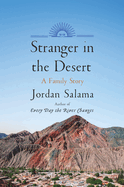
| Publisher: | Catapult | |
| Genre: | Family & Relationships, South America, Travel, Argentina, Family History & Genealogy (See Also Reference, Genealogy & Heraldry), Religion, Judaism, Americas (North Central South West Indies), History | |
| ISBN: | 9781646221653 | |
| Pub Date: | February 2024 | |
| Price: | $27 |
| Parenting & Family |
by Jordan Salama
New Yorker Jordan Salama (Every Day the River Changes) always knew his Jewish family had both Arab and Argentinian roots. In his compelling second book, Stranger in the Desert, Salama traces his journey through Latin America in search of his great-grandfather Selim Salama, a traveling salesman who left a colorful but vague legacy. Inspired by a binder bulging with stories and photos--his abuelo's handmade family archive--Salama heads to the Argentine Andes to learn more about Selim's life and possibly meet his great-grandfather's other descendants.
Salama is a thoughtful narrator, giving historical context for readers who may know little about the political, social, and economic forces that led to displaced Jews (and others) working as traveling salesmen in Argentina. During his travels, Jordan sends brief e-mails to his abuelo, sharing his triumphs and disappointments--since the journey contains both exciting twists and seeming dead ends.
Though Selim Salama himself proves elusive, Jordan's quest for the "Lost Salamas," his grandfather's lost descendants, gradually fades into the background. What he does discover is something deeper and more compelling: his own soul-level connection to the land that became his ancestors', its customs and language echoed in his abuelo's house in the Hudson Valley.
Through the lens of his family's layered identity, Salama muses on being a traveler, a wanderer, a person of mixed identities in a world that prefers to sort people into tidy linguistic or cultural boxes. Readers will be left musing on their own family histories, perhaps wondering what they might discover if they were to follow a loose thread or two. --Katie Noah Gibson, blogger at Cakes, Tea and Dreams
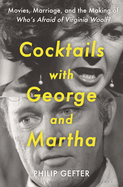
| Publisher: | Bloomsbury | |
| Genre: | History & Criticism, Theater, Marriage & Family, Drama, American, Film, Sociology, General, Social Science, Performing Arts | |
| ISBN: | 9781635579628 | |
| Pub Date: | February 2024 | |
| Price: | $32 |
| Performing Arts |
by Philip Gefter
When Who's Afraid of Virginia Woolf? opened on Broadway in 1962, one critic described Edward Albee's play as "3 1/2 hours long, four characters wide, and a cesspool deep." The play wasn't a cesspool, but it did plumb the depths of a begrimed marriage. Philip Gefter, in turn, virtuosically plumbs the depths of Albee's masterwork and its cultural impact in Cocktails with George and Martha: Movies, Marriage, and the Making of Who's Afraid of Virginia Woolf?
Gefter, a biographer of Richard Avedon and Sam Wagstaff, takes readers through the origins of Albee's play and the making of its 1966 film treatment, which seemed more likely to capsize midproduction than to become a cinema classic. Married costars Richard Burton and Elizabeth Taylor could be as stormy as George and Martha, the couple they were portraying. The film's producer, Ernest Lehman, and director, Mike Nichols--both first-timers--could go at it like George and Martha. Other problems included making the ravishing 32-year-old Taylor resemble frumpy middle-aged Martha, convincing the studio to release the movie in black and white, and persuading the Catholic Legion of Decency that the content was unobjectionable. (Nichols's friend Jacqueline Kennedy helped out on that front.)
Cocktails with George and Martha offers a gimlet-eyed interpretation of Albee's play, and by book's end, readers should be fully behind Gefter's submission that Virginia Woolf challenged "the hypocrisies of mainstream America, herald[ed] the sexual revolution, and register[ed] an entirely new psychological dimension to the public discourse." No wonder some critics squirmed. --Nell Beram, author and freelance writer
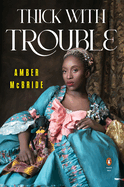
| Publisher: | Penguin | |
| Genre: | Women Authors, American, Poetry, African American & Black | |
| ISBN: | 9780143137474 | |
| Pub Date: | February 2024 | |
| Price: | $20 |
| Starred | Poetry |
by Amber McBride
Amber McBride's poetic voice burst on the scene with the National Book Award finalist Me (Moth), a young adult novel in verse. Her first adult collection, Thick with Trouble, puts that voice on full display, insistent and fierce as it interrogates the many ways a person--especially a Black woman--can be identified. McBride (Gone Wolf; We Are All So Good at Smiling) draws on the Hoodoo tradition and evokes the spiritual throughout the collection, organizing what she calls her "[Troublesome] Poems" into sections denoted by five tarot cards, each with a twist (e.g., "The Devil's Sister (Reversed)" and "The Hermit Woman Named Griot").
In the opening poem, "Roll Call: New Tarot Names for Black Girls," McBride invites readers to "Call us something lovely/ mischief changing robes./ Call us hardened honey's brownness/ on the tip of the tasting spoon." Soon after, the poem shifts from "us" to "me," proclaiming, "It's cold darling. Come inside, make a cream-colored psalm of me./ Call me gospel--I don't mind harboring millions of maybes at once."
McBride makes repeated use of this claiming and reclaiming of names or descriptors. She plays with the definitions of the titular "thick" and "trouble," which she underlines, imbuing each instance of them with layers of meaning. This collection of more than 50 poems is beautiful, sonorous, and song-like, even as the poems talk back and raise their voices. "Fragments of Dreams Left to Char at the Bottom of the Pot" opens with a quote from Nina Simone and closes with a line reminiscent of Elizabeth Bishop: "If you're afraid--(write it)/ grit your teeth, they'll kill you either way, you know." --Sara Beth West, freelance reviewer and librarian
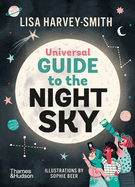
| Publisher: | Thames & Hudson | |
| Genre: | Science & Nature, Curiosities & Wonders, Juvenile Nonfiction, Astronomy | |
| ISBN: | 9781760763848 | |
| Pub Date: | February 2024 | |
| Price: | $19.95 |
| Starred | Children's & Young Adult |
by Lisa Harvey-Smith, illust. by Sophie Beer
Astronomer and author Lisa Harvey-Smith (The Secret Life of Stars) shares her space fascination with young readers in this detailed, accessible handbook to the heavens. Universal Guide to the Night Sky offers budding astronomers, engineers, and mathematicians a roadmap and equipment list for starting their explorations of space and its infinite possibilities.
Harvey-Smith's enthusiasm for her subject matter is clear in her presentation of the awe-inspiring features of the cosmos in a casual, conversational style: "I was gobsmacked that you could see a faraway planet without a telescope. The experience forever changed my view of the night sky." The author details how amateur astronomers can view stars, planets, asteroids, comets, meteors, and more wonders with basic equipment--binoculars, cell phone apps, star maps--and patience. She offers sight suggestions for readers in the Northern Hemisphere and the Southern Hemisphere so everyone can explore their own night skies. Throughout, Harvey-Smith includes challenges for her audience, like trying night-sky apps, taking pictures of celestial objects, and safely viewing sunspots with binoculars, all of which can be easily accomplished by middle-grade readers. And detailed backmatter is present for anyone wanting to research further.
Accompanying Harvey-Smith's informative text are playful color illustrations by Sophie Beer (Welcome, Little One) featuring space-related subjects, including stars, planets, space crafts, and a humorous representation of a nebula as a star nursery. The prose and art together are likely to exert gravitational pull on readers young and old, motivating them to look more closely at the marvels right above them every night. --Jen Forbus, freelancer
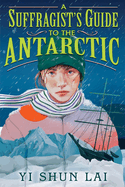
| Publisher: | Atheneum Books for Young Readers | |
| Genre: | Survival Stories, Exploration & Discovery, Girls & Women, Young Adult Fiction, Action & Adventure, Historical | |
| ISBN: | 9781665937764 | |
| Pub Date: | February 2024 | |
| Price: | $19.99 |
| Starred | Children's & Young Adult |
by Yi Shun Lai
A young woman joins an Antarctic voyage at the dawning of World War I in this gripping--and sometimes gut-wrenching--adventure tale.
Eighteen-year-old Clara Ketterling-Dunbar is enraged at the pivot the women's suffrage movement has taken to serve the war effort instead of doubling down on women gaining their rightful place in society. Her response is to sign on to a "cockamamie" cross-Antarctic expedition. Her journal-style guide is addressed to the women she expects will follow in her footsteps, breaking into the man's world of exploration. The sole female among 28 crew members, white Clara hopes to be treated as an equal, to "finally be seen as a person, instead of a mere gender." Not surprisingly, equality isn't exactly what she gets.
Clara reports on the range of treatment she receives from her seagoing compatriots, including kindness, condescension, mockery, and even brutality. She also describes the necessary horrors--like slaughtering dogs and penguins--involved in staying alive, as well as the wonders of the landscape: "everything is so bright, nearer to magic and fairyland than I've ever experienced."
In her first work for young adults, Yi Shun Lai (Not a Self-Help Book) showcases her incredible skills as a storyteller. A Suffragist's Guide to the Antarctic, modeled on the 1914 Shackleton expedition, adds context to the historic event with a compelling new element: women's roles and experiences in Edwardian times. Maps and an author's note provide background and resources. Witty and poignant commentary on unimaginable peril and infuriating injustice (plus some vengeance) ensures that this historical fiction will be long remembered. --Emilie Coulter, freelance writer and editor
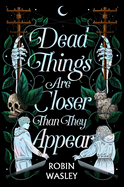
| Publisher: | Simon & Schuster Books for Young Readers | |
| Genre: | Fantasy, Romance, Family, Thrillers & Suspense, Young Adult Fiction, Supernatural, Adoption, Asian American & Pacific Islander | |
| ISBN: | 9781665914604 | |
| Pub Date: | February 2024 | |
| Price: | $19.99 |
| Starred | Children's & Young Adult |
by Robin Wasley
An "unextraordinary" teenager must survive the extraordinary circumstances of a magical apocalypse in this thrilling and genre-bending YA novel that feels like a blend between The Last of Us and Ali Hazelwood.
"Magic used to be everywhere," but "people abused it, and it had to be locked in the ground forever," policed by chosen Guardians. Seventeen-year-old Isidora "Sid" Spencer lives in Wellsie, a town above one of the fault lines "where magic lies sealed beneath the earth." Tourists flock to Wellsie to see the remnants of magic (when it rains, "you can see the ghosts"), but most of Wellsie's inhabitants, including Sid, are just "average." When someone begins killing Guardians, the fault ruptures, unleashing powerful magic and undead monsters upon Wellsie. Sid's average life is upended; her brother goes missing and she suspects magic is connected to his disappearance. The teen joins the remaining Guardians on their quest to repair the seal and save the town.
Debut author Robin Wasley blends elements of fantasy and horror to create a clever and exhilarating zombie apocalypse narrative in Dead Things Are Closer Than They Appear. Sid's distinct, snarky-yet-empathetic voice adds hilarity and humanity to the novel. Her desire for belonging--contextualized by her experience as a Korean adoptee of white parents and one of the only Asians in a predominantly white town--will resonate with many readers. Memorable supporting characters--including brooding musician Brian, who is white, mean girl with a heart of gold Eleni, who is a "pale tan," and grouchy-yet-protective cat Chad--form an endearing found family. Fans of post-apocalyptic stories, urban fantasy, and ensemble casts should delight in this gripping novel. --Alanna Felton, freelance reviewer
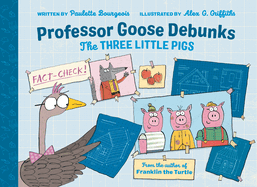
| Publisher: | Tundra | |
| Genre: | Adaptations, Wolves, Coyotes & Wild Dogs, Animals, General, Science & Nature, Juvenile Fiction, Fairy Tales & Folklore | |
| ISBN: | 9780735267329 | |
| Pub Date: | February 2024 | |
| Price: | $18.99 |
| Children's & Young Adult |
by Paulette Bourgeois, illust. by Alex G. Griffiths
With Professor Goose Debunks the Three Little Pigs, the second book in the Professor Goose Debunks Fairy Tales series, Paulette Bourgeois and Alex G. Griffiths take another rollicking deep dive into a classic kids' story. With narrator Professor Marie Curious Goose doing the scientific heavy lifting, all that's required of readers is a familiarity with the original fairy tale and a sense of humor.
The book begins with a fretful Professor Goose at a laptop: "Well, cook my goose--this is outrageous! My Great-Aunt Mother Goose never fact-checked the science in her stories. As a renowned and distinguished scientist, I feel obliged to correct any errors and omissions." As the story of the Three Little Pigs plays out, Professor Goose watches from the sidelines, often hiding somewhere in Griffiths's zippy digitally tweaked pen-and-ink art: behind a bale of straw, in a load of bricks, and so on. The professor editorializes from her perch within the story or in occasional Professor Goose's Fact Check sidebars. What does she think of, say, the three pigs' term "chinny-chin-chins" and the wolf's legendary huffing and puffing? "First of all," Professor Goose reports, "only humans have chins. And second, even if the wolf had superpower super-lungs, he couldn't blow a house in. You couldn't, either."
It should be noted that the good professor is mum on the scientific plausibility of a talking goose, but for the punning and piquing Professor Goose Debunks the Three Little Pigs, readers should be only too happy to suspend disbelief. --Nell Beram, freelance writer and YA author
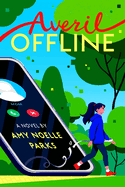
| Publisher: | Nancy Paulsen Books | |
| Genre: | Computers & Digital Media, Parents, Mysteries & Detective Stories, Family, Juvenile Fiction | |
| ISBN: | 9780593618646 | |
| Pub Date: | February 2024 | |
| Price: | $17.99 |
| Children's & Young Adult |
by Amy Noelle Parks
There's a fine line between safety and invasion of privacy in Averil Offline, a thought-provoking middle-grade mystery by Amy Noelle Parks (Summer of Brave).
Twelve-year old Averil loves to code, but that doesn't mean she loves all technology. Her "nemesis" is a reclusive coder named Rider Woollyback, inventor of the Ruby Slippers app that Averil's parents insist she and her older sister keep on their phones. With Ruby Slippers, Averil's mom knows the instant she steps off her usual route to school or wanders into the woods to sketch on her way home. Averil doesn't like to lie, but she needs privacy, so she and her friends have found subtle ways to slip the app's all-seeing eye. But when word gets out that an impending update will allow parents to remotely turn on camera and audio at any time, Averil and classmate Max decide to seek out Rider Woollyback and convince him to cancel the update before it's too late.
Averil Offline is a rapid and powerful exploration of privacy and consent and what people are willing to give up in the name of safety. The parents in Averil's world love that Ruby Slippers gives constant updates on their child's whereabouts; Averil wonders if it's worth it if the app leads to kids feeling like they're not trusted. When does safety become overprotection? When does letting a child make a mistake become letting them be in harm's way? Surprisingly funny, insightful, and sharp, Averil Offline thoroughly entertains as it opens the door for important conversations. --Kyla Paterno, freelance reviewer